12.1.11 Roots & Tubers
We took advantage of the nice weather the other weekend to really put the finishing touches on the garden. The beds got a last weeding and were cleared of everything but a few kale and collard plants. All the pots had to be emptied and many of the perennials trimmed back. Living closer to the land like this makes you much more aware of the seasons and so of the passing of time. I look down at my hands stuck in the dirt, the beginning of arthritis just starting to swell a few knuckles, and I see my mother's hands. I was blessed with long, slender fingers and have been proud of my hands all my life, but this, along with my dark hair, is just one of the many vanities the years will strip from me. In return I have gained other things, including the pleasure of hearing G crow upon finding a cache of brilliant pink potatoes buried under the straw where he planted seeds late last summer. He had given up all hope of success in this department, so the discovery was that much sweeter. Have you ever seen such a vividly colored spud? I cut one open and was amazed to find that it was a rosy pink inside, and unbelievably crisp and juicy, almost like an apple. The freshest potato I've ever encountered and a sight to behold.
Potatoes are starchy tubers from the nightshade family and there are more than a thousand varieties. These are Cranberry Reds. The origin of the word "spud" has erroneously been attributed to a 19th-century activist group dedicated to keeping the potato out of Britain which called itself The Society for the Prevention of an Unwholesome Diet. It actually derives from early versions of the word "spade," the tool used to plant potatoes.
I came across a couple of gorgeous varieties of these Jerusalem artichokes at the Union Square farmers market and couldn't resist buying a big bag. Then I had dinner at a friend's house and he made a really delicious, creamy and earthy soup from them which further confirmed that I need to eat more of these "earth apples." They're actually a species of sunflower—thus their other name, sunchoke—and have nothing to do with either Jerusalem or artichokes. Sweet and nutty, they can be roasted, boiled or eaten raw, shaved thin in salads. They are high in potassium, iron and fiber. Some people find them challenging to digest but I haven't noticed any adverse effects.
A quick perusal of the vegetable bin revealed a veritable arsenal of roots, including carrots, parsnips and celeriac. I decided to roughly chop all this bounty, together with copious amounts of onion, shallot and garlic. Tossed with good olive oil, coarse sea salt and lots of aleppo pepper—a fruity, slightly spicy chile with a note of cumin—this was spread on a foil-lined baking sheet and tucked into a 375º oven.
What emerged after an hour or so, was a softer, sweeter, caramelized and more fragrant version. I ate a big bowl for lunch, with a bit more olive oil and sea salt. So unbelievably good.
G's spuds are sweet and pure, tasting of the earth and sky. I married a potato farmer.
Vegetable Pan Roast
- — spices and/or herbs
- — sea salt
- — olive oil
- — garlic
- — shallots
- — onions
- — sunchokes
- — potatoes
- — celeriac
- — parsnips
- — carrots
Preheat the oven to 375º. Line a large baking sheet with a double layer of foil.
Peel the vegetables, except for the potatoes, and cut them into chunks of roughly the same size (about 2-3"). Remove the skins from the garlic, shallots and onions. Place everything in a big bowl and add a few glugs of olive oil, a couple big pinches of sea salt and any flavorings you like. Suggestions: aleppo pepper; vadouvan; rosemary & lemon zest; pimentón; porcini powder...you get the idea.
Roast until soft and caramelized, about an hour, turning with a spatula once or twice.
 Download Recipe
Download Recipe






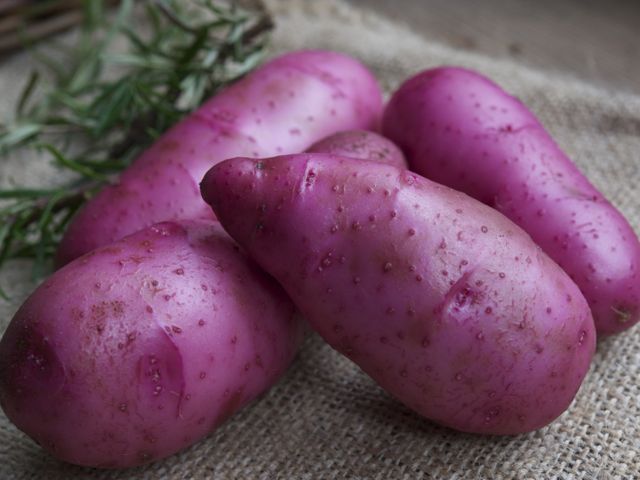
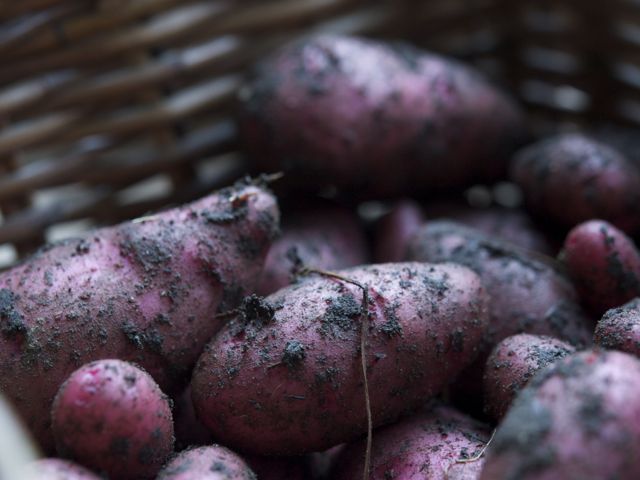
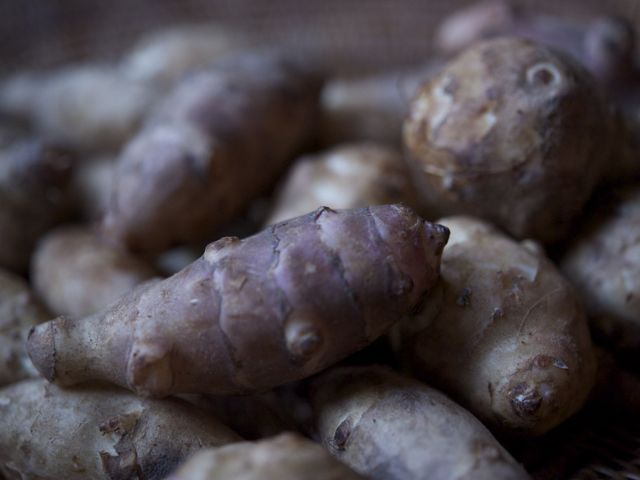
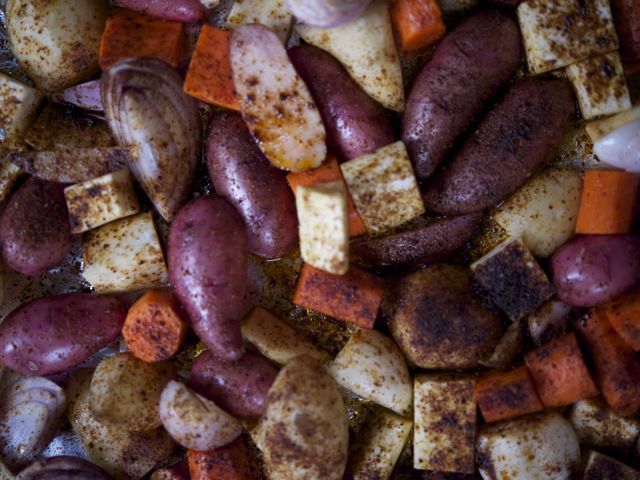
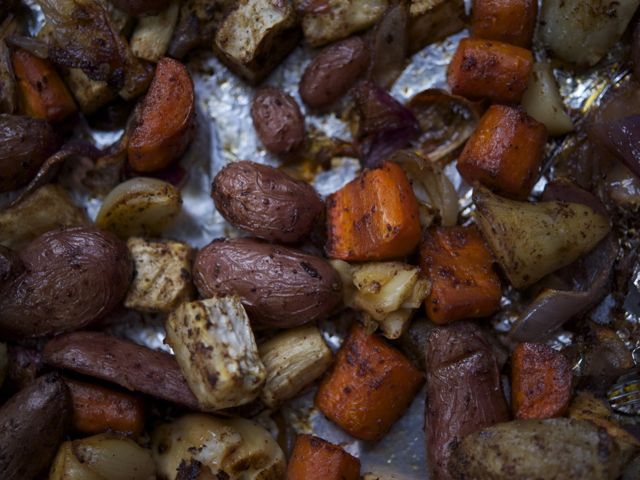
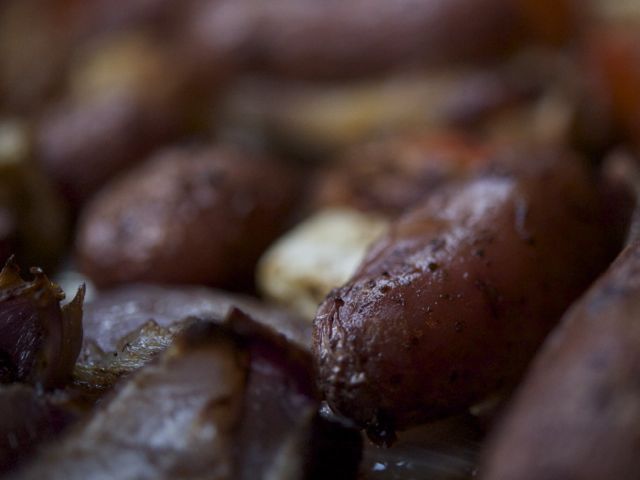
8 Comments